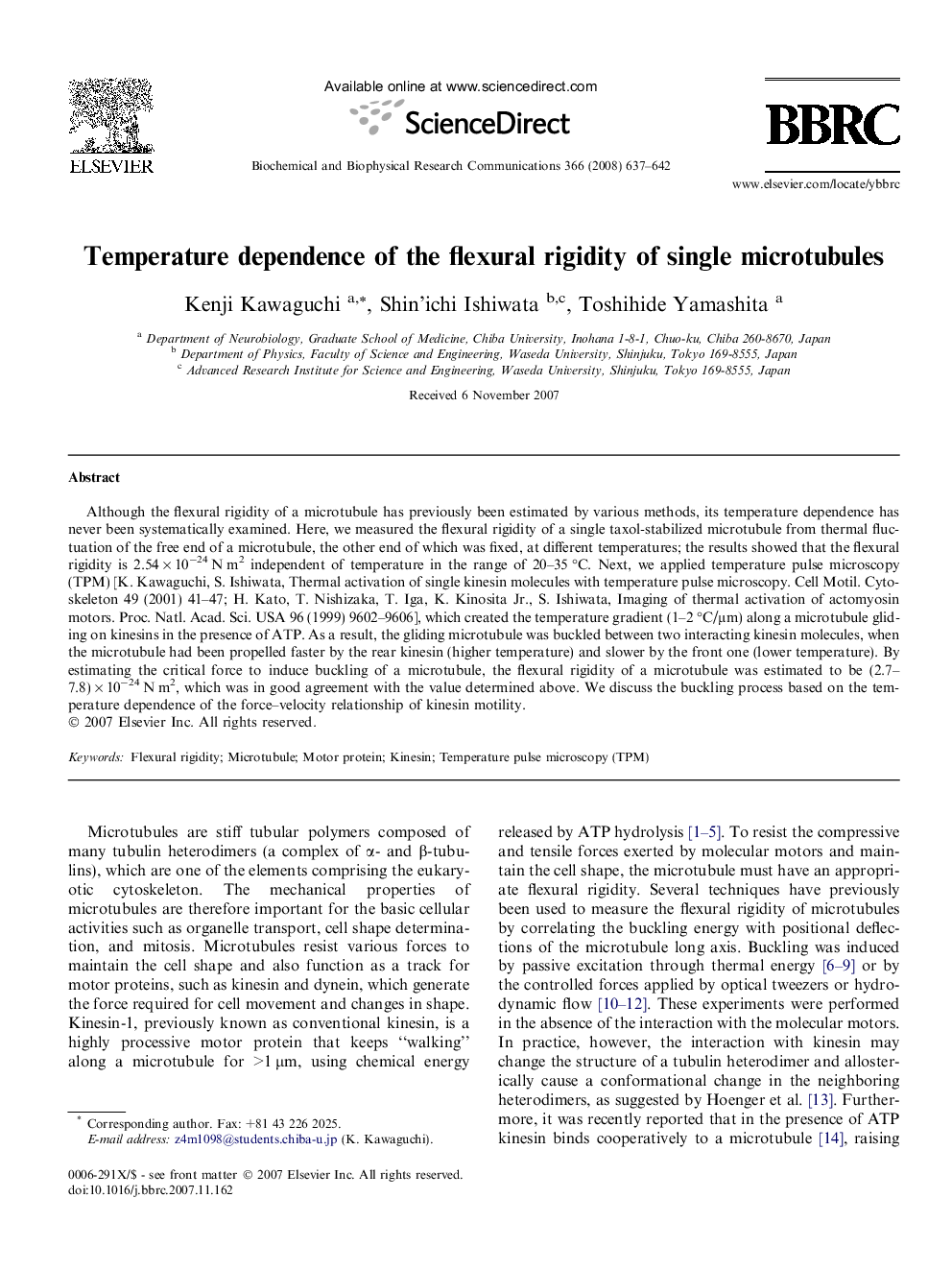| Article ID | Journal | Published Year | Pages | File Type |
|---|---|---|---|---|
| 1936423 | Biochemical and Biophysical Research Communications | 2008 | 6 Pages |
Although the flexural rigidity of a microtubule has previously been estimated by various methods, its temperature dependence has never been systematically examined. Here, we measured the flexural rigidity of a single taxol-stabilized microtubule from thermal fluctuation of the free end of a microtubule, the other end of which was fixed, at different temperatures; the results showed that the flexural rigidity is 2.54 × 10−24 N m2 independent of temperature in the range of 20–35 °C. Next, we applied temperature pulse microscopy (TPM) [K. Kawaguchi, S. Ishiwata, Thermal activation of single kinesin molecules with temperature pulse microscopy. Cell Motil. Cytoskeleton 49 (2001) 41–47; H. Kato, T. Nishizaka, T. Iga, K. Kinosita Jr., S. Ishiwata, Imaging of thermal activation of actomyosin motors. Proc. Natl. Acad. Sci. USA 96 (1999) 9602–9606], which created the temperature gradient (1–2 °C/μm) along a microtubule gliding on kinesins in the presence of ATP. As a result, the gliding microtubule was buckled between two interacting kinesin molecules, when the microtubule had been propelled faster by the rear kinesin (higher temperature) and slower by the front one (lower temperature). By estimating the critical force to induce buckling of a microtubule, the flexural rigidity of a microtubule was estimated to be (2.7–7.8) × 10−24 N m2, which was in good agreement with the value determined above. We discuss the buckling process based on the temperature dependence of the force–velocity relationship of kinesin motility.
